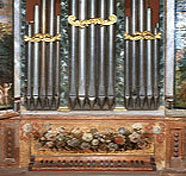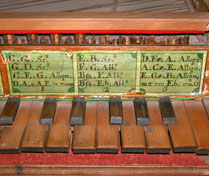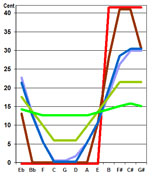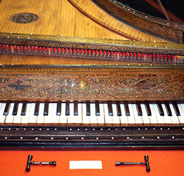Excerpts from the book
1978 ... the book Unequal Temperaments and their Role in the Performance of Early Music ... Rudolf Rasch published in Stimulus, the Ancient Music journal of the University of Utrecht, a detailed review ... Rasch praised both the theoretical framework and the emphasis in the historical relevance of each temperament for the present-day performance of music from different periods and styles. … Quite a few musicians wrote ... positive comments ... Among them were ... Igor Kipnis … Hubert Bédard … and John Barnes …. Bédard wrote: “The most useful text on the subject I have seen yet. … This book … seems to settle the matter at last.” ...

... three decades after Unequal Temperaments I started working on the present book. This is not a revision of the 1978 work, but a new treatise written from scratch ... it incorporates the results of new published research and recent discussions by/with colleagues. ...

With these simple yet powerful "dissection tools" we are now ready to enter, in the following Chapters, the fascinating world of early temperaments in the Renaissance, Baroque and Classical eras. ... In meantone temperament … contrary to an often repeated but erroneous belief, the main restriction to further modulations is not caused by the wolf fifth, but instead by the four wolf major thirds ...

The fascinating properties and proportions of the Standard meantone diatonic and chromatic scales are treated in the next Chapter ... Let us now see how ancient musicians—and their modern followers—fare in practice when they need a Spiral of Fifths with up to ... five pairs of flats and sharps one Diesis apart, producing a total of 17 pitches per octave. ...

... Chaumont and F.Couperin were using different variants ... The reconstructed Couperin organ temperament is shown below. ...

From Barbour (1951) to Padgham (1986), to quote just two modern writers, a disproportionate amount of effort and ink has been dedicated to the analysis of the multiple variants of circular temperament proposed by German Baroque writers. ... We will eventually conclude that only a handful of these systems are really worth studying and tuning to. ...

If the reader finds it difficult to grasp which flavour of “Good” temperament J.S. Bach advocated—or preferred—he/she is in good company. ... Bach did not compose the WTC in order to advocate a specific unique tuning to be re-discovered by archaeologists of the future deciphering “Rosetta stones”. …

The Baroque is the only period in Western musical history in which the different temperament of the intervals around the Circle of Fifths eventually became a component of musical expression. ... The High Baroque was the era of the circular systems, producing different aural sensations for the different tonalities. …

THIRTY(30) HINTS AND TRICKS FOR HARPSICHORD TUNING. [For] early stringed keyboards … please find below an integrated set of suggestions and instructions …
MEANTONE FRETTING. … Unlike the pure intonations where some considerable mistuning was expected by early audiences and anyway unavoidable … in meantone … an accurate tuning is both feasible and expected. A simple [fretting] procedure follows …

This chapter is intended to show how to play unfretted instruments [violin, viola, cello and double bass] easily and accurately in unequal temperaments. This is achieved by using special fingering charts and techniques. ... This chapter has been written so as to be useful also ... to singers. …

“The road to intonation hell is paved with just-intonation intentions”. ... Were Bach's horn and trumpet players (for example the famous Reiche) better than Handel's (for example the famous Snow)? ... were perhaps Bach's players using narrow-bore instruments … with increased flexibility and ease in the upper parts of the register?



